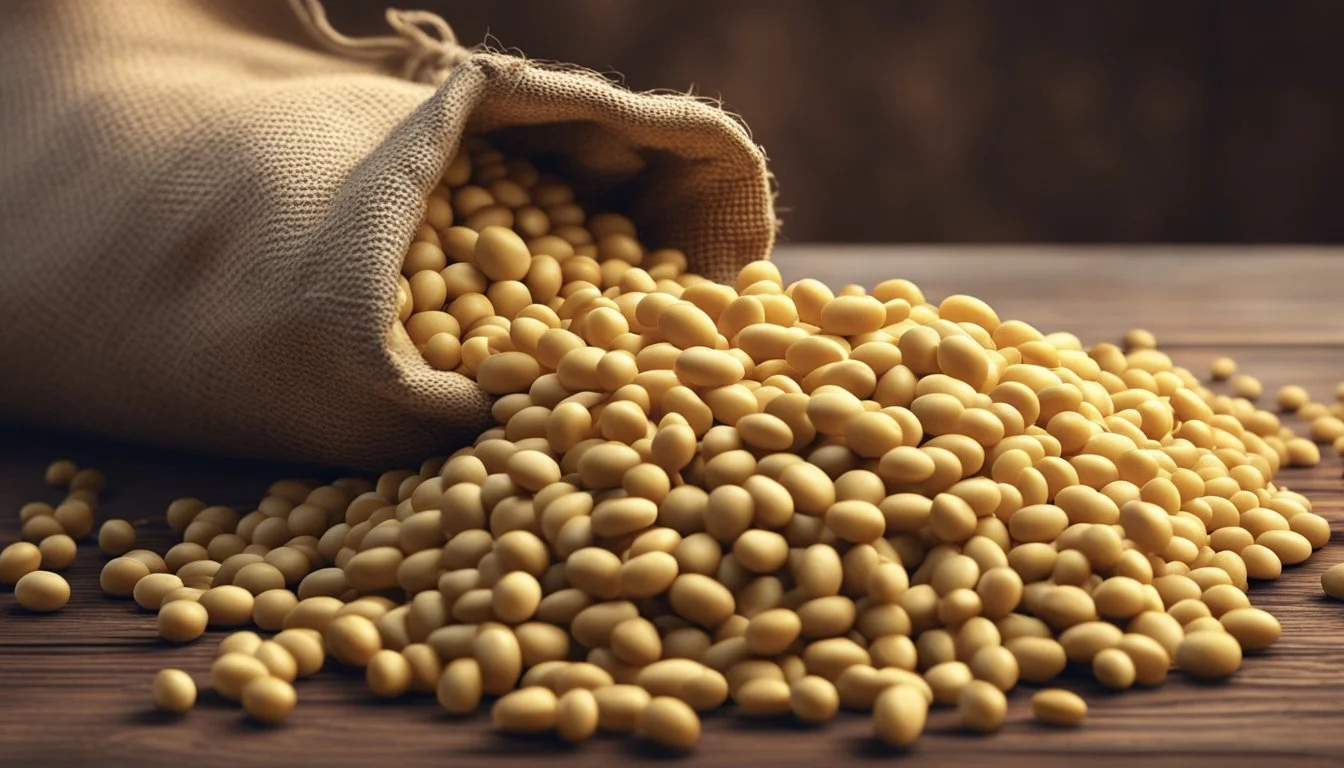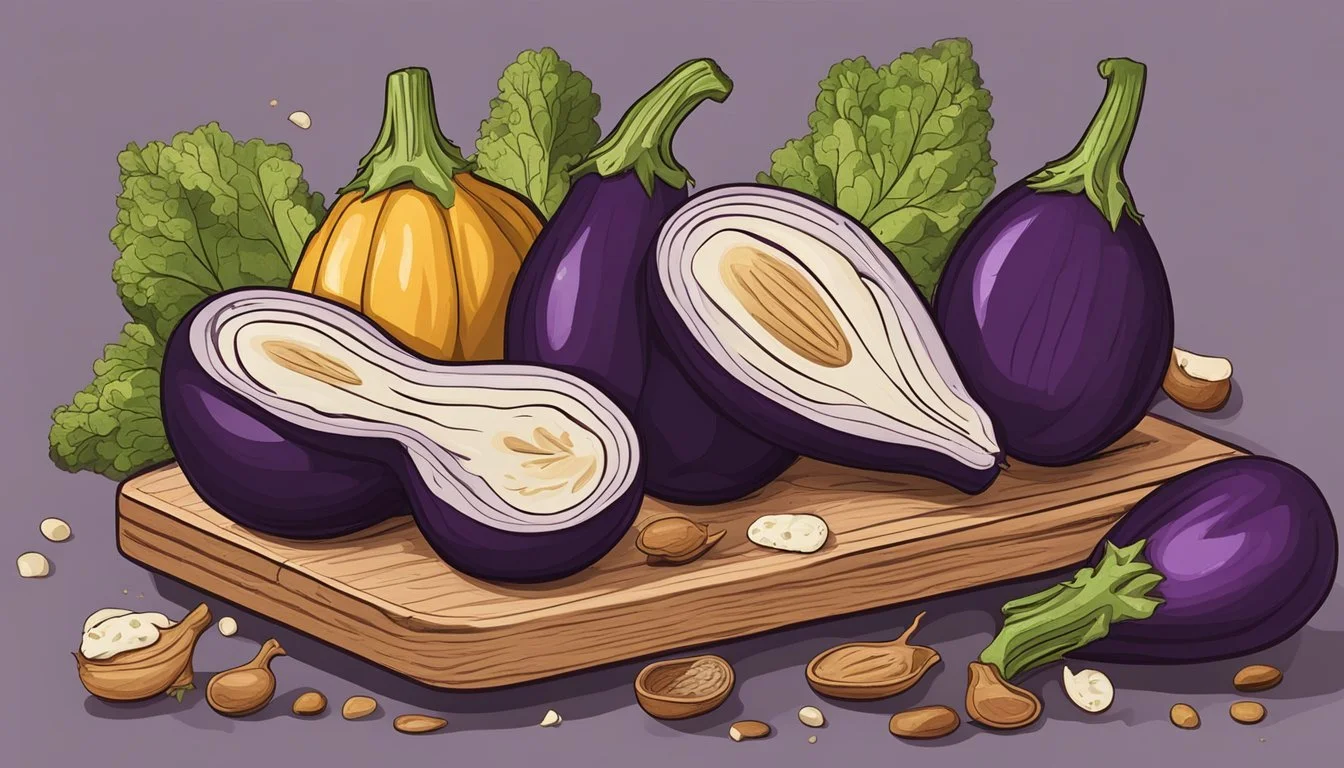8 Common Foods High in Lectins
What You Need to Know
Lectins are a type of protein found in many plant-based foods and are often a subject of curiosity and concern in dietary discussions. These proteins can bind to carbohydrates and have been associated with digestive issues and other health problems when consumed in large amounts.
Understanding which foods are high in lectins and how to minimize their effects can be crucial for maintaining good health. People interested in optimizing their diet often seek to identify and manage their intake of lectins, aiming to balance their benefits and potential risks.
1) Kidney Beans
Kidney beans are notably high in lectins, especially when raw or undercooked. These lectins can cause adverse reactions if ingested in large amounts. The specific lectin in kidney beans is phytohemagglutinin, which in raw beans exists in significantly high levels.
Cooking kidney beans thoroughly is essential to reduce the lectin content. Well-cooked kidney beans contain much lower levels of lectins, making them safe to consume. It is advised to boil them for at least 10 minutes, as this reduces the toxin to negligible amounts.
Consuming undercooked or raw kidney beans can lead to lectin poisoning, characterized by nausea, vomiting, and diarrhea. Proper preparation and cooking eliminate this risk, allowing kidney beans to be a nutritious and healthy part of the diet.
2) Soybeans
Soybeans are a well-known source of lectins. These proteins can have significant effects on the digestive system and other bodily functions.
Lectins are found in high quantities in raw soybeans. It's important to prepare soybeans correctly to reduce their lectin content. Cooking, sprouting, or fermenting soybeans can significantly lower the levels of lectins.
Consuming large amounts of raw soybeans can cause digestive issues. Symptoms might include nausea, diarrhea, and stomach cramps. This is due to the presence of a specific type of lectin known as phytohaemagglutinin.
In addition to lectins, soybeans are rich in essential nutrients. They provide protein, vitamins, and minerals that are beneficial to the diet. This makes them a popular choice among vegetarians and vegans.
By following proper preparation methods, soybeans can be included in the diet safely. Cooking and fermenting not only reduce lectin content but also enhance their nutritional value.
3) Tomatoes
Tomatoes are a common dietary source of lectins. These plant proteins are particularly concentrated in the skin and seeds. Removing the skin and seeds can significantly reduce the lectin content.
Lectins in tomatoes can potentially interfere with nutrient absorption and cause gastrointestinal discomfort in some individuals. Cooking tomatoes thoroughly helps in reducing these proteins to safer levels.
Despite containing lectins, tomatoes are also rich in vitamins, antioxidants, and other beneficial compounds. This makes them a nutritious addition to most diets when prepared correctly. For those sensitive to lectins, opting for peeled and seeded tomatoes can provide a more comfortable consumption experience.
Choosing canned or cooked tomato products can also be a practical way to lower lectin intake. These methods break down lectins more effectively than consuming raw tomatoes. Thus, while incorporating tomatoes in meals, focusing on proper preparation can make a noticeable difference.
4) Peanuts
Peanuts contain a significant amount of lectins, which are naturally occurring proteins. Lectins in peanuts can bind to carbohydrates and potentially cause digestive issues when consumed in large quantities.
Peanuts are commonly consumed in various forms, including raw, roasted, and as peanut butter. Cooking methods such as boiling or roasting can reduce lectin content by 98% to 100%.
Many plants, including peanuts, use lectins as a defense mechanism against predators like insects, bacteria, and fungi. While lectins serve this protective function for plants, they do not offer nutritional value when ingested by humans.
People sensitive to lectins might experience gastrointestinal discomfort. Therefore, proper preparation and cooking can help mitigate potential adverse effects.
5) Wheat Germ
Wheat germ, a component of whole wheat, is notably high in lectins.
Raw wheat germ can contain around 300 micrograms of wheat lectins per gram. These lectins are proteins that can bind to carbohydrates and are resistant to human digestion.
Despite its lectin content, wheat germ is often marketed as a nutritious addition to diets, providing a good source of fiber, vitamins, and minerals. Cooking or processing wheat germ can significantly reduce its lectin content. For example, the lectins in wheat germ are almost eliminated when it is boiled or baked.
This means that products like bread or pasta made from wheat germ may have much lower lectin levels than raw wheat germ. Nonetheless, individuals with sensitivities or certain health conditions, such as celiac disease, may need to be cautious with wheat germ consumption.
Lectins have been linked to digestive issues in sensitive individuals, prompting some to avoid high-lectin foods. For most people, however, consuming properly processed wheat germ poses minimal risk.
6) Potatoes
Potatoes are a common staple in many diets globally. They belong to the nightshade family, which includes other lectin-rich foods such as tomatoes, eggplants, and peppers.
Raw potatoes contain high levels of lectins. These naturally occurring proteins can potentially cause digestive issues when consumed in large quantities.
Cooking potatoes thoroughly is a way to reduce their lectin content.
The lectins in potatoes are primarily found in the skin.
Peeling potatoes before cooking can help minimize lectin intake.
Processed forms of potatoes, like chips or fries, often have reduced lectin content due to the cooking processes involved.
Despite the presence of lectins, potatoes are a valuable source of nutrients. They provide essential vitamins, minerals, and fiber.
It's important to balance the potential downsides of lectins with the overall nutritional benefits that potatoes offer.
7) Eggplant
Eggplant, also known as aubergine, is another food that contains a high amount of lectins. It belongs to the nightshade family, which also includes tomatoes and peppers. These vegetables often have higher lectin levels compared to other plants.
The lectins in eggplant can be a concern for some individuals, especially those with sensitivities or digestive issues. Consuming raw eggplant can lead to discomfort due to these proteins. Cooking eggplant thoroughly can help reduce its lectin content, making it easier to digest and enjoy.
Besides lectins, eggplant is packed with nutrients. It contains antioxidants, vitamins, and minerals that contribute positively to the diet. For most people, the benefits of consuming eggplant outweigh the potential negatives related to its lectin content.
For anyone mindful of lectins but still wanting to enjoy eggplant, it's advisable to prepare it in ways that reduce lectin levels. Cooking methods such as baking, grilling, or sautéing can be effective. Removing the skin can also help since lectins are often concentrated in the skin.
8) Goji Berries
Goji berries are often marketed as a superfood, but they contain significant levels of lectins. Lectins are plant proteins that can interfere with nutrient absorption and cause digestive issues in some people.
Consuming goji berries can lead to gastrointestinal discomfort due to their high lectin content. This can include symptoms such as bloating, gas, and stomach pain.
Despite their nutritional benefits, such as high levels of vitamins A and C, the potential negative effects of lectins in goji berries may outweigh these benefits for some individuals.
Dr. Gundry, a proponent of the lectin-free diet, advises against consuming goji berries due to these concerns. He suggests that those following a lectin-free diet should avoid them to maintain gut health.
In addition to lectins, goji berries can interact with medications such as blood thinners, potentially leading to adverse effects. This makes it important for individuals taking such medications to exercise caution.
9) Lentils
Lentils are a type of legume commonly known for their rich nutrient profile, including protein and fiber.
These beans are naturally high in lectins, a type of protein that can bind to carbohydrates.
Cooking lentils thoroughly can significantly reduce their lectin content, making them safer and easier to digest.
Different methods such as boiling, pressure cooking, or sprouting can help to lower the lectin levels in lentils.
By reducing lectins, individuals can enjoy lentils without the potential digestive discomfort sometimes associated with these proteins.
Besides their lectin content, lentils offer numerous health benefits.
They are an excellent source of essential nutrients such as iron, folate, and various antioxidants.
Their low glycemic index also makes them suitable for managing blood sugar levels.
Therefore, for those concerned about lectins, proper preparation methods can make lentils a highly nutritious and safe addition to the diet.
Lentils are versatile and can be incorporated into numerous dishes, from soups to salads.
10) Zucchini
Zucchini is a versatile summer squash popular in many culinary traditions. While it is less notorious for its lectin content compared to other nightshades and legumes, zucchini is not entirely free of lectins.
When consumed raw, the lectin levels in zucchini are more pronounced. Cooking, however, can reduce the lectin content, making it easier to digest.
Zucchini can be enjoyed in various forms such as grilled, sautéed, or added to soups and stews. Each cooking method alters not only its texture and flavor but also its nutrient profile.
Apart from lectins, zucchini offers a good source of vitamins A and C, along with dietary fiber. This makes it a nutritionally valuable addition to a balanced diet, as long as it is properly prepared.
Eating zucchini in moderation as part of a diverse diet should pose no significant health risks. Those with specific sensitivities or digestive issues may want to be careful and consider reducing their intake.
Understanding Lectins
Lectins are proteins found in a variety of plant foods, offering both potential benefits and risks. They can impact digestion and nutrient absorption but also protect plants from pests.
What Are Lectins?
Lectins are a type of protein that binds to carbohydrates. Found in many plants, they serve as a defense mechanism against pests.
Some common foods containing higher levels of lectins include beans, peanuts, lentils, tomatoes, potatoes, eggplant, and grains. While they do not provide nutritional value directly, they play a significant role in plant biology.
Cooking foods at high temperatures greatly reduces lectin activity, making them safer for consumption. For instance, thoroughly cooked kidney beans contain minimal lectins compared to their raw counterparts.
How Lectins Affect the Body
Lectins can interfere with digestion and nutrient absorption. They bind to the gut lining, potentially leading to issues like gas, bloating, or gut inflammation. Some individuals may experience greater sensitivity, resulting in more pronounced symptoms.
On the positive side, lectin-rich foods are often high in B vitamins, fiber, minerals, and healthy fats. For people without sensitivities, these benefits can outweigh the negatives.
In rare cases, consuming large amounts of raw or undercooked lectin-rich foods can be toxic. Cooking methods such as boiling and pressure cooking can effectively eliminate this risk.
Health Impacts of Lectin-Rich Foods
Lectin-rich foods have both benefits and potential downsides. The positive aspects often revolve around their nutritional value, while the adverse effects concern digestive issues and certain health risks.
Potential Benefits
Lectin-containing foods such as beans, whole grains, and nuts are often praised for their nutritional benefits. Beans, for example, are high in protein and fiber, contributing to a healthy diet and supporting digestive health.
Research indicates that these foods may lower rates of Type 2 diabetes and cardiovascular disease.
Many lectin-rich foods also contain essential vitamins and minerals. Whole grains, for instance, are rich in B-vitamins, iron, and magnesium, which are crucial for energy production and immune function.
Nuts provide healthy fats and antioxidants, which can promote heart health. Including a variety of these foods in diets can support a well-rounded and balanced nutrient intake.
Possible Adverse Effects
While there are numerous benefits, consuming high amounts of lectins can cause negative side effects. Raw or undercooked legumes, such as kidney beans, contain high levels of phytohemagglutinin, a type of lectin that can cause severe digestive issues.
Symptoms include bloating, fatigue, and joint pain.
Some people might experience gastrointestinal distress, which can be exacerbated by large quantities of lectin-rich foods. There is also concern that excessive lectin intake might contribute to leaky gut syndrome and exacerbate autoimmune conditions.
Cooking and processing foods properly reduces most of these risks, making it crucial to follow correct preparation methods to avoid adverse health effects.






